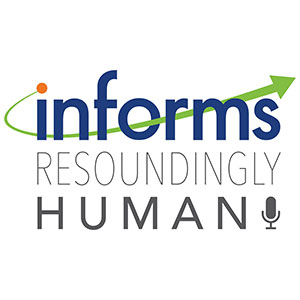
Sheldon H. Jacobson: What can the FAA and TSA do to handle spikes in flyers?
Sheldon H. Jacobson: What can the FAA and TSA do to handle spikes in flyers?

Sheldon H. Jacobson: What can the FAA and TSA do to handle spikes in flyers?

We all know that the Trump-Biden debate exposed the limitations of President Biden, and that Donald Trump has problems with the truth. Since then, several Democratic lawmakers have called for Biden to step aside in favor of someone who can better articulate the party platform and provide a more robust figure for voters to rally around and support in the general election against Trump.

Cutting ocean freight carbon emissions will require collaboration and effort

In hard-to-reach areas, the fast-moving tech is streamlining emergency deliveries, from blood for transfusions to snakebite antivenom.

President Joe Biden and former President Donald Trump share common ground on tariff policy. While some policymakers argue that tariffs can be a tool to protect and help grow domestic industries and ensure national security, tariffs may also result in unintended economic consequences that cost U.S. consumers billions. Trump's trade war tariffs generated about $233 billion in duties collected by U.S. Customs through March 2024, according to an analysis from the Tax Foundation. Watch the video above to find out which candidate's tariffs will be more expensive for the American consumer.

Jeff Cohen
Chief Strategy Officer
INFORMS
Catonsville, MD
[email protected]
443-757-3565
An audio journey of how data and analytics save lives, save money and solve problems.


With seemingly no limit to the demand for artificial intelligence, everyone in the energy, AI, and climate fields is justifiably worried. Will there be enough clean electricity to power AI and enough water to cool the data centers that support this technology? These are important questions with serious implications for communities, the economy, and the environment.

It’s college graduation season, which means over 4 million seniors will graduate in the next few weeks, flooding the job market with new candidates. One area that has shown high potential for the right candidates is artificial intelligence and machine learning. Both disciplines are part of the larger data and analytics career path.

Drugs being explicitly developed to treat rare diseases are getting more expensive.

Robert F. Kennedy Jr., as the new secretary of Health and Human Services, is the nation’s de facto healthcare czar. He will have influence over numerous highly visible agencies, including the Centers for Disease Control and Prevention, the National Institutes of Health and the Food and Drug Administration, among others. Given that healthcare is something that touches everyone’s life, his footprint of influence will be expansive.

The recent US-China agreement to temporarily reduce tariffs is a major step for global trade, with tariffs on US goods entering China dropping from 125% to 10% and on Chinese goods entering the US decreasing from 145% to 30% starting May 14. While this has boosted markets and created optimism, key industries like autos and steel remain affected, leaving businesses waiting for clearer long-term trade policies.

With sweeping new tariffs on Chinese-made products set to take effect this summer, Americans are being urged to prepare for price hikes on everyday goods. President Donald Trump's reinstated trade policies are expected to affect a wide swath of consumer imports, including electronics, furniture, appliances, and baby gear. Retail experts are advising shoppers to act before the tariffs hit and prices rise.

Twenty years ago, few people would have been able to imagine the energy landscape of today. In 2005, US oil production, after a long decline, had fallen to its lowest levels in decades, and few experts thought that would change.

In the case of upgrading electrical and broadband infrastructure, new analysis from the University of Massachusetts Amherst reveals {that a} “dig once” strategy is almost 40% more economical than changing them individually.